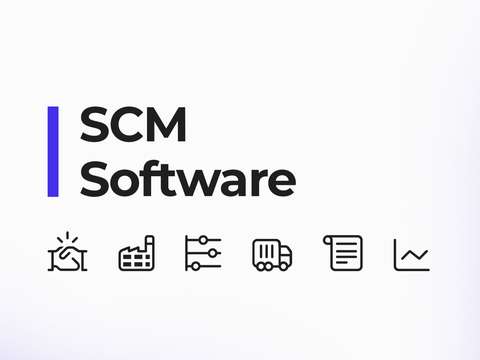According to the National Retail Federation (NRF), 14.5% of all retail sales in 2023 resulted in returned products. As anticipated, online sales exhibited a higher return rate at 17.6%, compared to 10.02% for brick-and-mortar store returns (excluding online orders returned in-store).
In the same NRF report, it was revealed that, on average, 13.7% of all returns are fraudulent. This data suggests that for online businesses, dealing with returns may pose a risk, as more than one-tenth of them could potentially exploit the return policy, resulting in financial losses for the business.
In this article, we shed light on fraudulent returns and uncover the most common methods employed by scammers to deceive online stores, exploiting vulnerabilities in return policies. Drawing upon our expertise in eCommerce, we will provide advice aimed at helping you safeguard your online store against the threat of return fraud. To take your protection a step further, consider leveraging specialized return management software designed to detect suspicious patterns, reduce losses, and keep your profits secure.
What is return fraud?
Return fraud is a form of financial fraud aiming to abuse an online store's return policy for personal gain. Customers may engage in fraudulent returns for a variety of reasons, such as getting a product for free, returning a product they have used, or making money on a refund.
While this type of practice is difficult to detect, it is important to identify and manage it to prevent it from becoming a serious problem for the bottom line of an online store.
Example of return fraud
A consumer buys a high-priced laptop from an online store and, shortly after receiving the delivery, initiates a return, claiming a manufacturing defect. However, instead of returning the original item, the customer sends a counterfeit product that outwardly appears identical but is of lower quality or even damaged.
When an online store receives the item, they may issue a refund before commencing an investigation into the reported "defect." In this case, the scammer essentially acquires a brand-new PC without paying for it.
The impact of return fraud on retail
Return fraud can have a significant impact on the finances of an online store. According to Juniper Research, the eCommerce industry loses around $48 billion per year due to fraudulent returns, representing 10% of total revenue.
A survey by RiskIfied revealed that 45% of U.S. consumers have taken some action that could be considered fraudulent, although only 39% were aware of it.
These data suggest that simple consumer habits can lead buyers to take advantage of return policies unconsciously. For this reason, online stores need to know how to detect fraudulent returns and what actions to take to prevent them. Otherwise, this can lead to massive financial losses and additional workload for customer support teams.
Another downside of return fraud is its detrimental impact on the reputation of online stores. When e-commerce businesses take measures to address return fraud, they often alter their return policies, resulting in a less appealing shopping experience for regular buyers. Customers may become hesitant to make purchases if they fear that their returns might be rejected.
Combating return fraud in retail
Return fraud and deceitful refund practices are strictly prohibited under both federal and state laws in the United States and other countries. The specific penalties for fraudulent returns can vary depending on the jurisdiction, but they can range from substantial fines to imprisonment.
In one notable case, a woman in Florida was fined $160,000 for engaging in fraudulent refund schemes. This example underscores the severity with which the law regards these practices.
Retailers can find reassurance in knowing that the law fully supports them when dealing with fraudulent return activities. We encourage online stores not to hesitate to request additional proof in suspicious situations and to remain vigilant when processing returns.
8 most common types of return fraud
1. Empty box scams
One of the more common methods of scamming online stores is through an empty box return. Fortunately, preventing such returns is relatively straightforward. However, some online stores opt to refund the money immediately upon the initiation of a return shipment, a practice aimed at enhancing customer convenience but one that carries inherent risks. In instances where funds have been reimbursed, online stores may later discover that the returned package was empty or contained an item unrelated to the original product.
2. Wardrobing
Wardrobing is a practice in which customers buy items with the intention of returning them after short-term use. This constitutes one of the most prevalent types of return fraud. Approximately 50% of all fraudulent returns in the apparel industry are attributed to wardrobing.
3. Returning stolen merchandise
Returning stolen merchandise is a prevalent form of fraud within the electronics industry. In this scheme, a scammer purchases an electronic device, initiates a return, and switches the device to obtain a full refund for the stolen product.
4. Receipt Fraud
A common type of fraud involves the utilization of forged or stolen receipts to secure refunds for products that were never purchased. This method of return fraud is particularly effective in online stores with a manual return process, where purchased products and returns are not seamlessly linked in a centralized database.
5. Bricking
Bricking is a common practice, particularly in the electronics industry. During bricking, fraudsters return an electronic item after removing valuable parts, which they then resell for profit while retaining the refund. This deceptive tactic can also include returning a product without certain components, such as headphones or a charger.
6. Exaggerated Damage
Exaggerated damage fraud entails making false claims that an item has sustained damage during shipping or delivery to obtain a partial or full refund. Some scammers go to the extent of providing photos of a similar broken item. In cases of severe damage, some online stores may opt not to request the return of the product and instead proceed directly with a refund.
7. Retail Arbitrage
Retail arbitrage, also known as cross-retailer return, takes place when a customer buys a product from an online store and then replaces it with a less expensive imitation or an identical product obtained at a discount from competitors. This form of fraud is challenging to detect and resolve.
8. Deliberate refund fraud
In refund fraud, scammers typically don't switch or damage a product. The primary goal is to redirect the money to a different account, ensuring a clean return. Here's a classic example: a fraudster buys an item with a stolen credit card, initiates a return, and receives the refund in a different bank account.
How to detect return fraud
Undoubtedly, preventing fraudulent returns is preferable to dealing with them. To prevent them in the first place, you need to know how to detect them. These straightforward practices can guide you in identifying the right areas to monitor when you sense something suspicious about returns in your online store.
Use technology
Utilize return management software to monitor your shipments, and capture data on returns. This provides a structured overview of processes with clear, timestamped records of all actions. Such information proves valuable when investigating any suspicious activities in your online store.
Watch customer return patterns
Keep an eye on how customers behave, especially those who return items frequently or show suspicious activities. If you notice a lot of returns or repeated high-value ones, it could be a sign of potential fraud. Act quickly to address these patterns.
Use return authorization
Request customers to provide proof of purchase, such as a receipt or order number. This practice serves as a deterrent for fraudsters attempting to return stolen or counterfeit items. Additionally, it aids in combating Receipt Fraud, as stolen or counterfeit receipts would not align with the account profile's purchase history.
Team up with other retailers
Collaborate with other retailers in your industry to share information about return fraud trends and tactics. This teamwork ensures that everyone stays informed and better prepared to tackle fraud together.
How to prevent return fraud in eCommerce
Request ID for return
While it may seem like an off-putting practice that could make the return process less convenient, we believe it is the best way to ensure the authenticity of a return and genuinely assist the customer. Flexibility is key, and you can consider requesting identification only for items exceeding $200 in value.
Alternatively, integrating with one of the KYC (Know Your Customer) software providers can streamline this process for customers. If the buyer genuinely intends to return the item without causing harm to your business, there should be no reason for them to refrain from providing that information.
Set a clear return policy
Ensure that your customers are well-informed about your business's return conditions. To achieve this, your return policy must be easily accessible and prominently displayed. The most recommended location to highlight this information is at the bottom of your website, known as the "footer."
Additionally, remember to regularly update your return policy to address any vulnerabilities that could potentially harm your online store. For example, you can add a new condition for apparel, allowing returns only if the clothes have the original label attached. This measure can prevent "wardrobing" and makes returns unacceptable if the client has cut off the label.
Recommend to read
Unlock latest strategies and insights about return management by reading our comprehensive guide.
Offer store credits or gift cards
Another highly effective practice to prevent various types of return fraud, such as Refund Fraud, Receipt Fraud, and Retail Arbitrage, is to eliminate cash refunds and instead offer store credits or gift cards.
Many scammers are primarily interested in obtaining money rather than items or credits in an online store account. Additionally, this practice helps safeguard your profit margins by encouraging regular customers to make another purchase instead of opting for a cash refund.
Encouraging product exchanges instead of returns can significantly reduce the occurrence of return fraud. However, it's essential to acknowledge that, in certain situations, a return may be the only viable solution to address an issue. In this article we explain in depth why exchanges are more profitable than returns.
Collect data for detecting behavioral patterns
We highly recommend automating your return process not only to save time in processing returns, but also to gather valuable data about each return. Utilize return management software to conduct return audits and analyze data from previous return fraud cases. This will provide insights into the tactics that fraudsters employ to extract money from your business.
Analyze return reasons
It is crucial that, during the product return process, you inquire about the reason for the return. It might raise suspicions if the same customer has made multiple purchases, and their reason for returning, such as a hoodie being too small, appears repeatedly. This should be considered a red flag for your team. Conversely, if the return reasons are legitimate and the items are in perfect condition, there is no cause for suspicion of fraudulent returns.
Block access to fraudulent buyers
Don't hesitate to suspend the account for further investigation and request additional info if you find a weird pattern in behavior in your online store. If you are certain that some customers systematically abuse your return policy, blocking these clients will save you money in the long run.
Train your employees on fraud detection
Enhance your employees' ability to detect fraudulent returns through comprehensive training. It is vital that they understand which products are most prone to fraud and maintain meticulous records of all returns and refunds.
Incorporate new practices and rules into your return process to detect and combat return fraud more efficiently. For instance, weigh electronic items upon return and compare it to their original weight to eliminate "bricking" altogether.
Set up a workflow to determine product eligibility
Advanced return management solution, like Outvio, can assist you in establishing a workflow to assess product eligibility in the return process. This software enables you to configure rules and conditions that determine whether a return meets eligibility criteria.
For instance, you can set up a rule in the returns portal that mandates customers to provide a photo or a detailed description of the item when requesting a return for a damaged product. This practice enhances your ability to verify the legitimacy of the return.
Additionally, you have the option to configure a list of sensitive products that cannot be returned directly, acting as a preventive measure to curb fraudulent activities by buyers.
What are product eligibility rules?
Product eligibility rules are criteria you can manage in Outvio's return flow to determine if a product is eligible for return. These rules can encompass various factors, including the product's condition, the date of purchase, the company's return policy, and the type of product.
Implementing such criteria serves as an additional measure in preventing return fraud, contributing to the enhanced security and profitability of your eCommerce business.
Conclusion
In summary, addressing return fraud in eCommerce requires a proactive approach. The prevalence of returns, coupled with the risks of fraudulent activities, underscores the need for preventive measures. Key steps include requesting identification, setting clear return policies, and offering alternatives like store credits.
Automation, data collection for behavioral analysis, and employee training on fraud detection are vital for maintaining a secure online shopping environment. Implementing product eligibility rules, utilizing advanced return management software, and updating return processes contribute significantly to preventing and detecting fraudulent returns.
By adopting these practices, online retailers can protect their finances, uphold their reputation, and provide a positive shopping experience for genuine customers.




